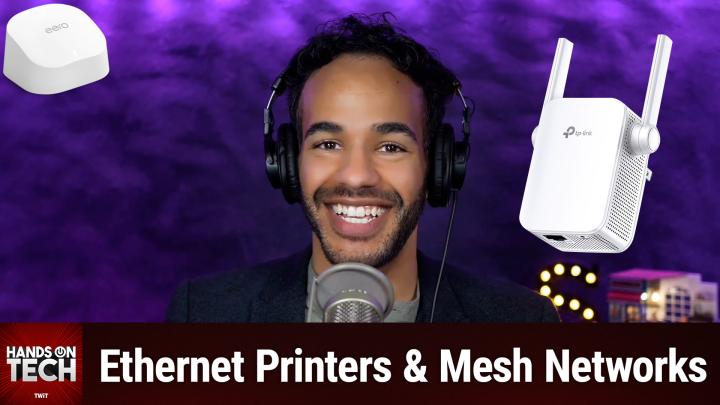How To Connect A Wired Printer to A Modern Mesh Network
AI-created, human-reviewed.
In the latest episode of Hands-On Tech, host Mikah Sargent tackled a common but frustrating tech problem: how to connect a wired printer to a modern mesh network. As many homes upgrade to mesh systems for better Wi-Fi coverage, older peripherals that require Ethernet connections can become challenging to integrate.
The Problem: Mesh Networks and Legacy Hardware
Kevin wrote in with a situation: He previously used a conventional Wi-Fi router with a powerline adapter to connect his wired printer. After upgrading to an eero mesh network, he found himself without a clear solution for maintaining that printer connection, as his eero extenders apparently lacked Ethernet ports for direct connections.
This highlights a transition challenge in home networking. While mesh systems provide superior coverage and ease of use, they sometimes complicate connections for legacy devices that weren't designed with modern networking configurations in mind.
Understanding Mesh Networking and Wired Connections
Mikah explained that mesh networks typically consist of a main router node and additional access points (which he clarified aren't technically "extenders"). Some mesh systems, including certain eero configurations, offer Ethernet ports on their satellite units to support what's called "wired backhaul" - using physical connections between nodes rather than wireless ones for improved stability.
However, not all mesh access points include these wired options, creating a dilemma for users with Ethernet-dependent peripherals like Kevin's printer.
The Affordable Solution: TP-Link AC1200 Wi-Fi Extender
Rather than suggesting expensive networking equipment or printer replacement, Mikah recommended the TP-Link AC1200 Wi-Fi Extender. This Wirecutter-recommended device provides a simple bridge between modern wireless networks and legacy wired devices.
At the time of recording, the adapter was available on Amazon at a significant discount - just $27 with an additional $5 coupon (at the time of recording), making it exceptionally affordable. The device plugs into a wall outlet and features an Ethernet port specifically designed for connecting wired devices to wireless networks.
Implementation Tips
Mikah offered several important recommendations for implementing this solution:
- Use the TP-Link extender exclusively for the printer connection rather than trying to make it serve double-duty as a general network extender.
- Create a separate network name for this connection to prevent device confusion.
- Don't expect high-speed connectivity through this adapter - it's purpose-built for compatibility rather than performance.
- Remember that mesh networks can incorporate third-party devices like this adapter without disrupting the main network configuration.
This solution allows users to maintain their investment in perfectly functional printers while enjoying the benefits of modern mesh networking - all without complex configuration or expensive equipment.
The Bigger Picture: Bridging Technology Generations
This practical solution highlights a common challenge in our increasingly connected homes. As networking technology evolves rapidly, perfectly functional peripherals can become connectivity orphans. Finding affordable bridges between technology generations helps reduce electronic waste and unnecessary expenses.
Whether you're using eero, Google Nest WiFi, or another mesh system, this approach offers a pathway to maintaining your wired printer connections without sacrificing the benefits of whole-home mesh coverage.
For more practical tech solutions like this one, be sure to tune in to Hands-On Tech with Mikah Sargent, where everyday tech problems meet accessible, expert solutions.
